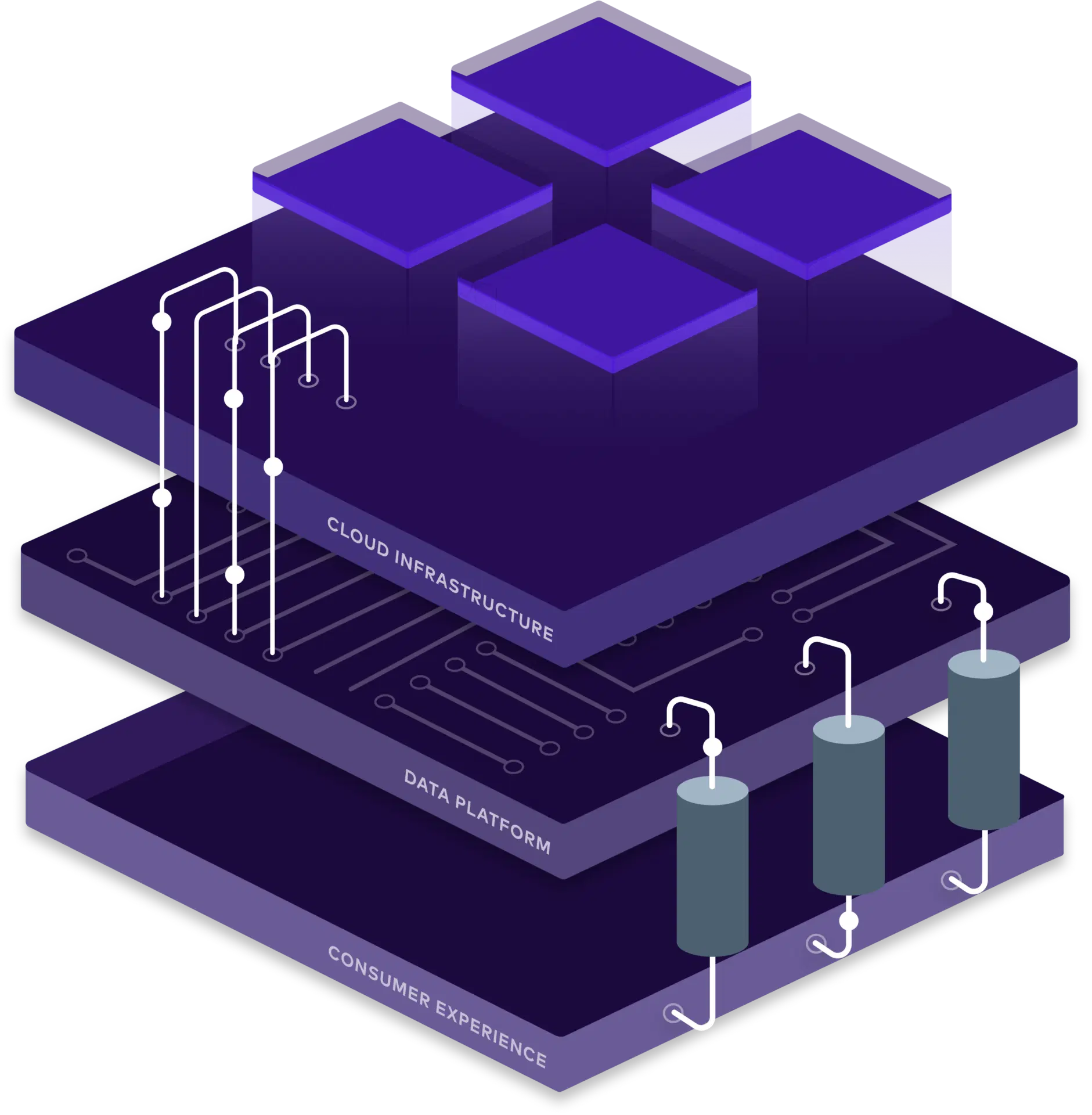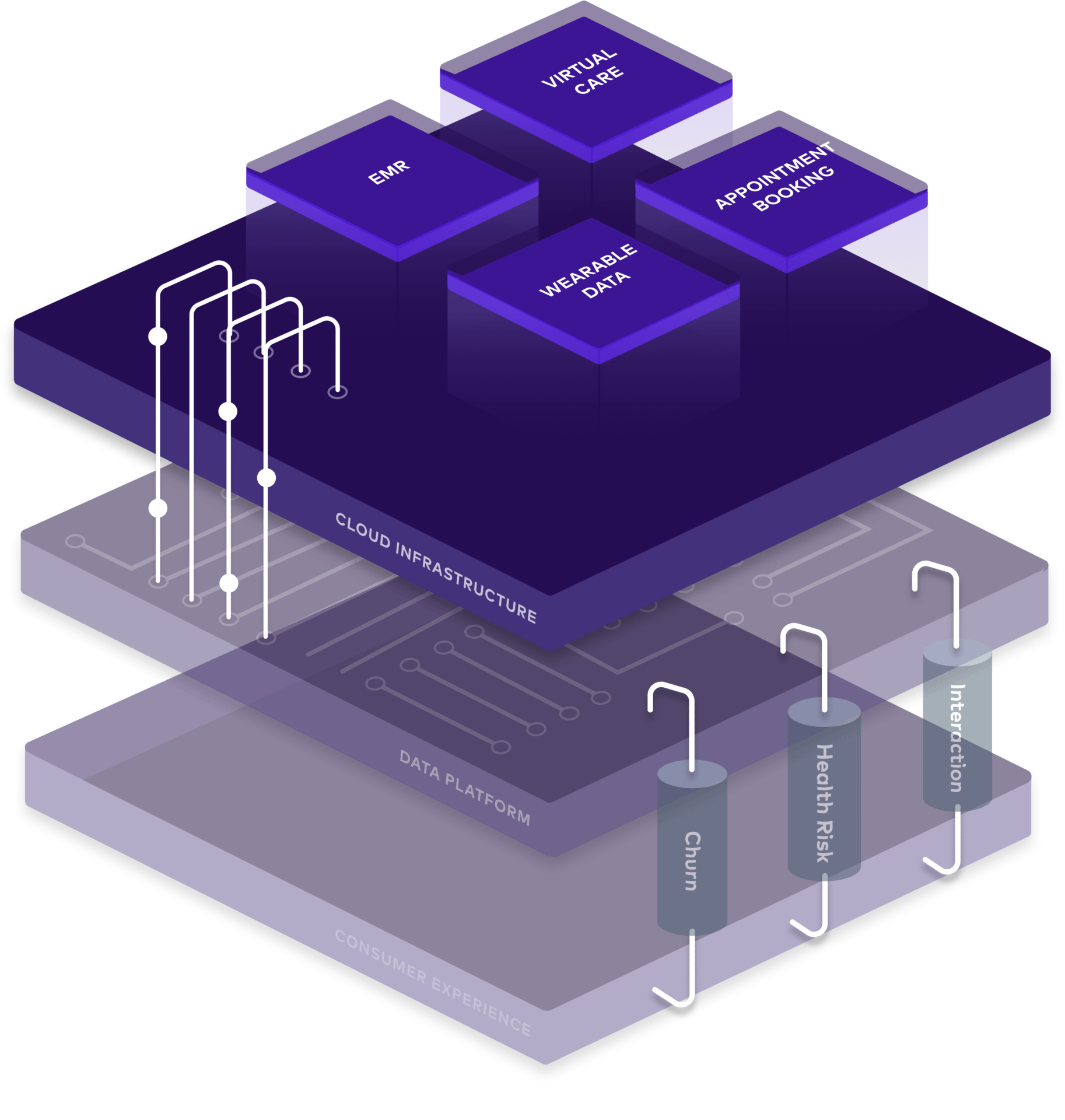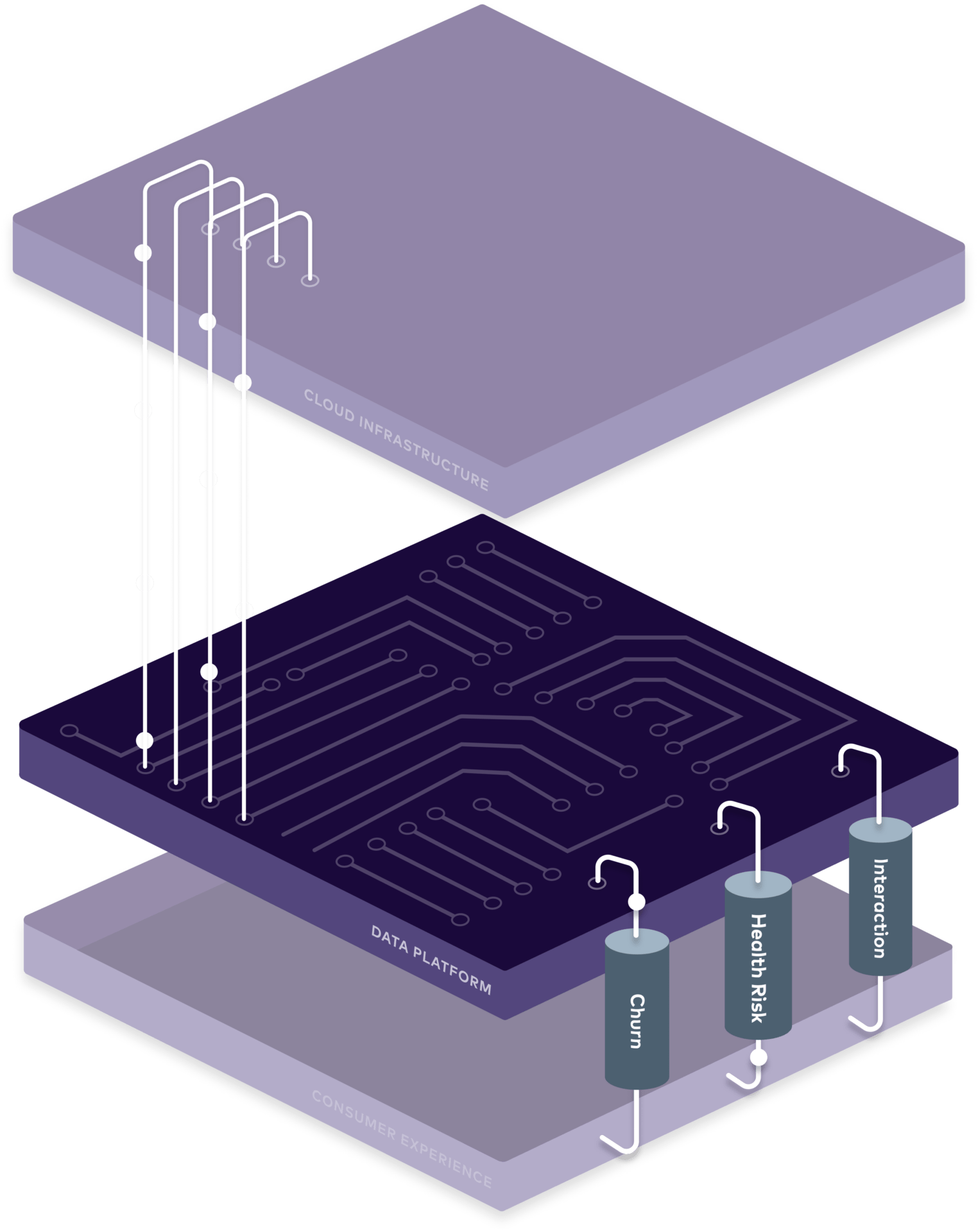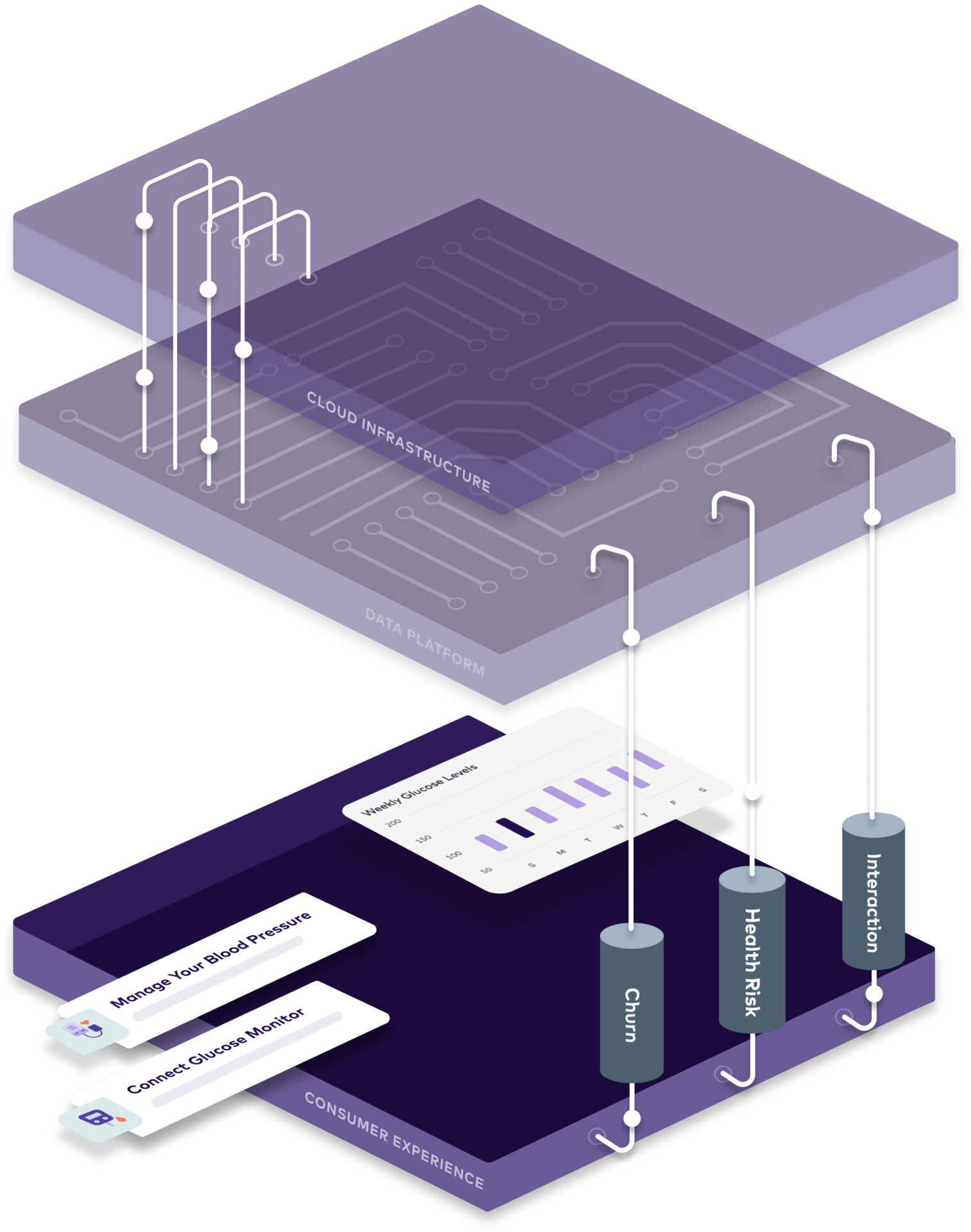Summary
- Digital health platforms (DHPs) are a multi-layered infrastructure that integrates disparate health data and systems to deliver personalized consumer experiences.
- The core components of DHPs include: cloud infrastructure, a data platform layer, and a CX layer for user-facing personalizations.
- These platforms use ML models to provide proactive, personalized engagement for better health management and outcomes. They are customizable and scalable, allowing organizations to adapt to evolving needs and integrate new technologies seamlessly.
Digital health platforms (DHPs), also known as healthcare consumer experience (CX) platforms, address the common problems many payer and provider organizations face, such as disjointed point solutions and siloed data. Platforms actualize healthcare organizations’ strategic visions and act as an accelerator for CX transformation. At its core, a DHP is a multi-layer infrastructure that powers deeply personalized consumer experiences.
A best-in-class DHP has an open architecture that connects all of an organization’s existing systems, data and partners into a single, integrated healthcare CX that is inherently interoperable and composable. All of these platform elements work together to create a revolutionary member or patient experience that allows healthcare organizations to truly differentiate themselves and their brand from competitors.
Anatomy of a healthcare CX platform

Cloud infrastructure
A platform brings together all the disparate point solutions and technologies a healthcare organization already owns. Its base infrastructure collects the currently fragmented data and aggregates it into a data pool that sits in the cloud. This means taking all the data gathered by previously isolated appointment booking technologies, electronic medical records (EMRs), telehealth solutions, wearables, etc., and bringing it into a singular cloud-based infrastructure. The applications and information sources that feed into the cloud are configurable and customizable, meaning healthcare organizations can easily add and remove new point solutions as business objectives and consumer demands shift.
Let’s now bring this functionality to life through a member health journey. Sarah is a member of a large insurance payer and logs onto their platform for the first time. She completes a health assessment where she indicates a history of hypertension. The new health data that exemplifies high blood pressure is fed back into the cloud infrastructure and is added to her provider’s EMR. This bidirectional data flow enables the platform to provide Sarah with highly targeted health activities and recommendations. As a result, she continuously interacts with her personalized journey to better manage her condition over time and avoid costly episodes of care.

Data platform layer
All the cloud data is gathered and fed into the data platform layer. This is where information is broken down and sorted into individual and population data sets. The sorted data is then sent to the heart of the healthcare CX platform — the personalization engine. This engine runs on the aggregated data that has been collected, which in turn powers highly curated machine learning (ML) models to predict and recommend “next best actions” for the patient or member.
The personalization engine brings together consumer-provided information with cloud data to create highly personalized health experiences. This bidirectional flow of data is what makes a platform so compelling. ML models constantly ingest new information, iterating and learning from consumers’ interactions and data for a highly personalized and proactive experience.
For Sarah, the data platform layer takes the information she provided in her health profile about hypertension and feeds it into the personalization engine. After her new data has flowed into the platform, one of the models identifies she is at risk for a future medical event. As a result, Sarah is targeted with guided content and health activities to help her manage her condition over time.

CX
All of these platform components enable a next-generation healthcare consumer experience that is personalized, proactive and omnichannel in nature. The information derived from the personalization engine powers a highly tailored consumer-facing experience that guides the patient or member through different steps to help them improve their health management and seek care when needed. Capabilities within the platform are modular and configurable in nature and can be tailored to the healthcare organization’s needs.
Sarah then speaks with her pharmacist and decides to connect her blood pressure monitor to her profile. The platform is able to ingest the ongoing data from Sarah’s monitor and visualizes it for her, allowing Sarah to see the progress she has made. The platform provides nudges that build habitual engagement to ensure Sarah’s re-engaging consistently in order to manage her condition.

The only way to achieve this transformation and deliver personalized experiences at scale is through a platform approach.
ANDY TRUSCOTT
Global Health Technology Lead, Accenture

Becker’s Healthcare
Learn why the future of healthcare CX requires a platform approach.
